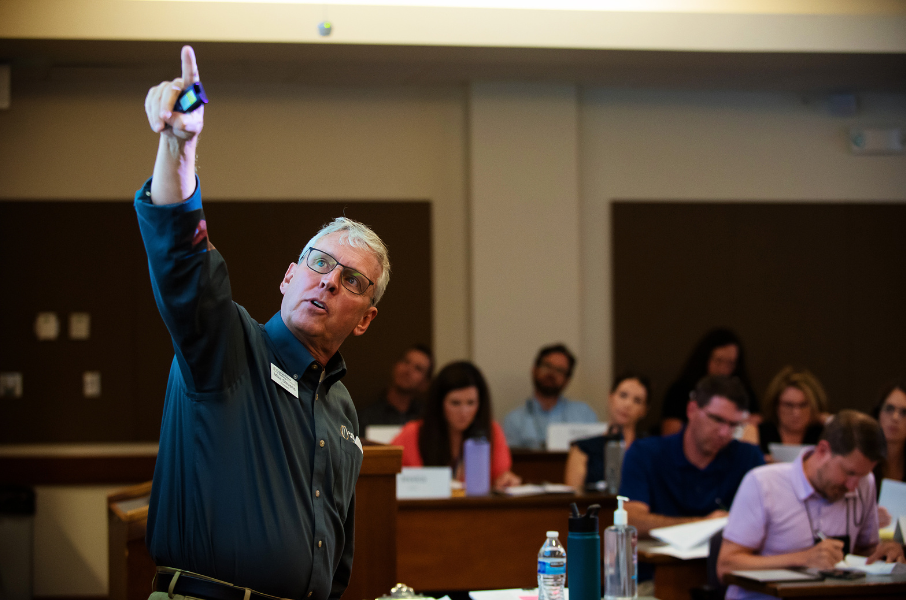By GSBC President & CEO Michael Stevens
Answering the question about the future of community banking has almost become a rhetorical exercise, as there are many variables but no clear answer. There are, however, several long-term trends that have been impacting this industry from which we can draw from in our attempt:
- We have a dynamic economy but are operating in inflationary and rising-interest rate environments we have not experienced in over a decade. There are global issues which flow through our economy in positive and negative ways.
- Technology has been changing financial services and consumer behavior for decades. This has only accelerated, increasing opportunities, altering risk profiles and changing the competitive landscape.
- Banking is heavily regulated with mounting expectations and requirements. Efforts at regulatory relief have paled in comparison to new requirements and enhanced regulatory scrutiny.
- A societal shift in attitudes about “work” is challenging a relationship business model and the idea of the bank as a local destination.
Community banks pre-date the founding of the United States. As banks evolved to meet the needs of a changing nation, they demonstrated their resiliency and criticality to the economy. The industry has shrunk, but 4,500 is still a significant number of banks to serve a diverse economy. Community banks have demonstrated a proficiency in adopting technology. Finally, they consistently demonstrate how to respond and serve their communities in a crisis, be it a natural disaster or human made.
This demonstrated resiliency over time should give industry leaders the drive and inspiration to project a long-term future for community banks in the United States. At the Graduate School of Banking at Colorado (GSBC), this is our position.
Discerning a Desired Future
Why is the question about the future of community banking so difficult to answer? The long-term trends discussed above can be daunting, even if they provide opportunities. Arguably, they are enough to deal with and absorb. Leaders need to have their organizations spend more time imagining the bank and community 10-plus years into the future, beyond the current line of sight.
Some will argue it is impossible to accurately predict that far out, and they would be correct. This type of thinking is not about predicting what will happen, but channeling creativity and excitement to imagine what could happen. This will allow leaders to identify desirable outcomes as well as outcomes they want to avoid.
A Future-Oriented Mindset
Leaders must be mindful of their approach and mindset to inspire this work effectively. There are three activities to easily deploy in the organization to encourage this mindset:
- Change Experience: Line up staff in order of tenure in the industry. Have each person share something they used to do or has changed significantly since they started their banking careers. The stories can be very entertaining and bring people together. This activity is constructive on two fronts: First, it shows that there really has been change in the organization. Second, it proves that the organization has successfully managed it.
- In the News: Once a week, dedicate time to identify a news story not directly related to banking and take the time throughout the day to think about what it could mean to your business in the future. Instead of saying to yourself, ‘That is interesting,’ as you move to the next article, think instead, ‘What could that mean to my bank in the future?’ Create a mechanism for staff to share their thoughts.
- Your Future Self: Randomly select a series of days. At the end of the days, reflect on something you did and how the activity could be different in the future. The work from exercise #2 above will help you with this one. Starting a shared journal is a great place for groups of people to share their thoughts and interact on ideas.
This type of work is not a substitute for strategic planning. The detailed strategy work, tactical planning and resource allocation are critical to the organization’s success in the market. However, the process can be supported by creating space for creativity and innovative thinking sparked by the above.
People & Technology
GSBC students can design two of their projects to meet their institutions’ needs. The most popular topics are succession planning and technology solutions. Succession planning is more than what person will sit in which chair. To do it right, it takes time and an investment in people.
Technology can be deployed to improve the customer experience, expand your market footprint, and improve operational efficiency. Technology is accessible and relatively affordable, unless the organization makes the wrong selection.
Decision Making
As you look at your organization through the lens of these two critical areas (people and technology), would the decisions the bank makes be different if the organization had a longer-term vision? While the outcome is far from certain, the overall direction informed by a longer-term vision may influence how a board of directors thinks about its future leadership and talent retention. The direction of the bank should inform the technology investment and its priorities, leading to better long-term and efficient decisions.
Innovation and change can make the bank better and allow it to be the best bank for its community and customers. Community bank leaders should be intentional about opening their imaginations to contemplate and define the best future for their banks and the industry overall.
Stevens is responsible for the above content and reflects the principles applied to student work at GSBC. The resources used to inspire GSBC’s approach are The Institute for the Future; The New Group Consulting, Inc.; The Anticipatory Organization by David Burrus; and Imaginable by Jane McGonigal.

